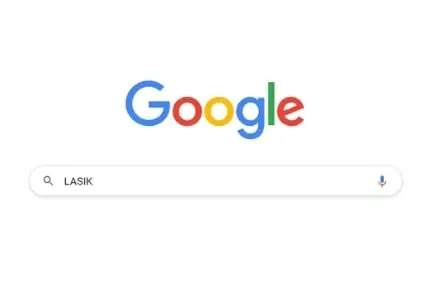8 Most Common LASIK Questions Answered

An unexpected side effect of the pandemic has been the emergence of bothersome eye issues. From mask-related foggy glasses and dry eye to contact lens fatigue from hours spent in front of screens, these bothersome issues are leading many to consider whether laser vision correction procedures such as LASIK and SMILE are right for them. Getting your laser vision correction and LASIK questions answered is important.
Most people start their journey is asking: Is LASIK safe? The answer is an emphatic – yes. How do we know? More than 7,000 clinical studies investigating the procedure’s safety and effectiveness. But before you schedule your LASIK consultation there are more questions that individuals considering LASIK want to know.
8 most common LASIK questions answered
To address eight more of the most commonly searched and most frequently asked questions about LASIK, we sat down with a few members of our editorial advisory board of leading ophthalmologists.
1. How does LASIK work?
Robert Maloney, M.D. of the Maloney-Shamie Vision Institute explains, “LASIK is like sculpting a contact lens onto the surface of your eye. You get vision like a contact lens, often better, without the feeling of a contact and the nuisance of a contact.” This provides great insight into how LASIK works and how it can help improve your vision.
2. What vision conditions does LASIK correct?
“Lasik treats conditions that require people to wear glasses or contact lenses to see properly. These include myopia (nearsighted), hyperopia (farsighted), and astigmatism,” says Sheri Rowen, M.D. of NVision Eye Centers.
3. Am I a good candidate?
The only way for an individual to find out if they are a candidate for LASIK is to have a thorough eye examination. Eric Donnenfeld, M.D. of OCLI Vision says, “LASIK is one of the safest and most rewarding procedures performed today, but requires the patient to be a good candidate for the procedure. A good candidate for LASIK must have a combination of the right physical findings and expectations. During a thorough eye examination, an eye doctor will evaluate the shape, regularity, thickness, and health of the front of the eye, the cornea. The doctor will also measure the degree of nearsightedness, farsightedness, and astigmatism. The most important part of the LASIK consultation will then be the informed consent that educates the patient of the potential risks and benefits of LASIK.”
4. How many patients have 20/20 vision or better after LASIK surgery?
Gregory Parkhurst, M.D. of Parkhurst NuVision affirms that “Most published studies show that between 96-99% of patients achieve 20/20 vision or better with a single laser procedure. Those who do not reach 20/20 after their initial procedure are often eligible to have a LASIK “enhancement” procedure done to fine-tune the results to accomplish their goal.”
5. How long does LASIK surgery last?
Dr. Maloney says, “Forever. The correction will outlast you. Now, that isn’t to say that vision can’t change as you age – it sometimes does. LASIK corrects the eye but doesn’t freeze it in place.”
6. What is the difference between LASIK and SMILE?
Dr. Parkhurst describes the difference this way: “LASIK and SMILE are laser eye procedures designed to remove the imperfections in the cornea that lead to common vision disorders like nearsightedness and astigmatism. While they accomplish the same goal, the procedures approach it differently. LASIK uses a femtosecond laser to expose the inner layer of the cornea where an excimer laser permanently reshapes the cornea to improve vision. SMILE uses a laser to create a disc within the inner layers of the cornea and remove the disc through a very small incision in the cornea. By removing the disc, the cornea is reshaped to improve vision.”
7. What is the difference between LASIK and PRK?
“LASIK and PRK are similar in that both are performed with the same excimer laser and have almost identical visual results. LASIK employs a keratome or second laser to make a flap in the cornea that is elevated, and the excimer laser is used to correct the vision. The flap is then put back in place and there is minimal discomfort with vision being greatly improved by the next day. In PRK there is no flap, and the skin or epithelium of the cornea is removed, the excimer laser treats the vision, and a contact lens is placed on the eye for 3-5 days to allow the epithelium to heal back. In PRK there can be more discomfort and the vision takes considerably longer to return. PRK is the preferred treatment in thinner, more irregular corneas. I perform LASIK on 85% of my patients and PRK on 15% of my patients,” explains Dr. Donnenfeld.
8. Can LASIK get rid of my reading glasses?
Dr. Rowen continued, “Somewhere in the mid-40’s, we start losing our near vision. There are a number of ways to correct for this including monovision. Monovision means one eye (dominant) is set for distance and your other eye (non-dominant) is set for near vision. This can be done with LASIK laser vision correction treatment. Many people tolerate this well to augment their near vision. The best way to test for this is to have your eye doctor do a trial in the exam room or with temporary contact lenses. If you are a candidate for this, you would be able to see up close and at distance with laser vision correction.”
Next Step: Schedule a consultation with a qualified surgeon to get your LASIK questions answered
If your eye and vision issues have you thinking more about what laser vision correction can do for you and your lifestyle, having a highly qualified eye surgeon to help guide you in your decision-making and answer the questions you have about LASIK is an excellent first step. If you are looking for an eye surgeon to partner with, here are a few qualifications to look for as well as a description of what a surgeon evaluates for candidacy for a laser vision correction procedure. Your eye surgeon should be eager to answer your questions about LASIK and other laser vision correction procedures to help you decide if it is right for you.




